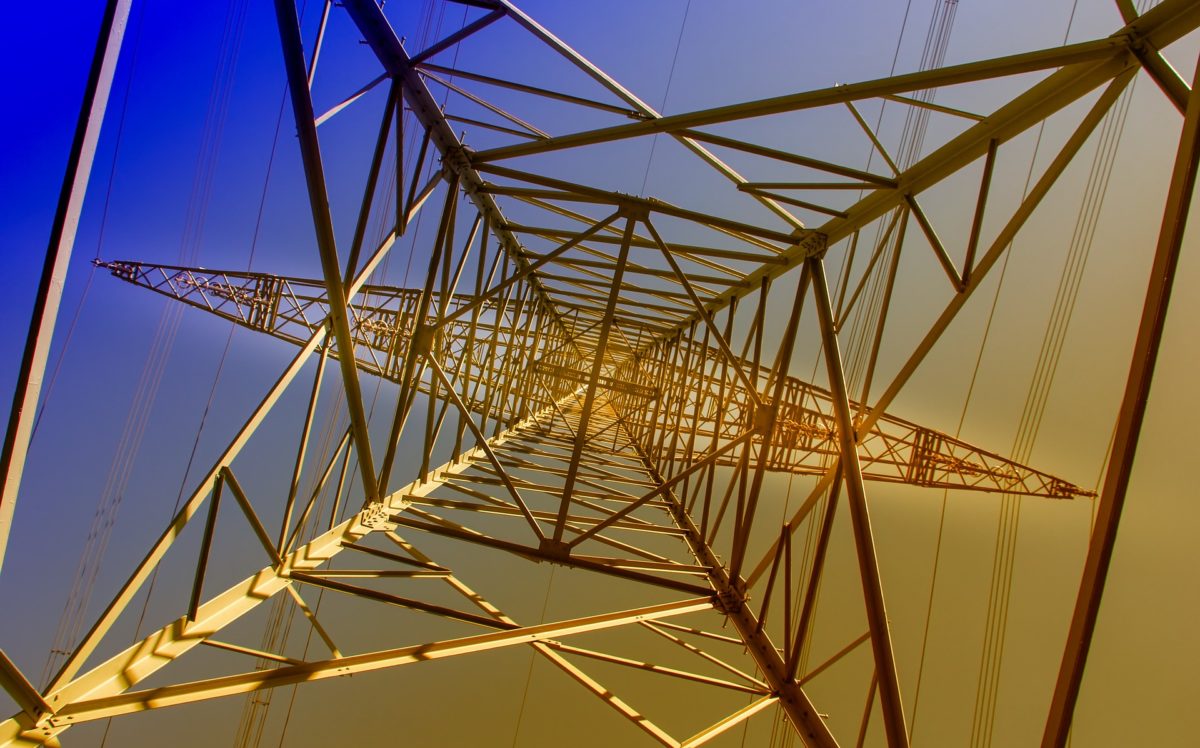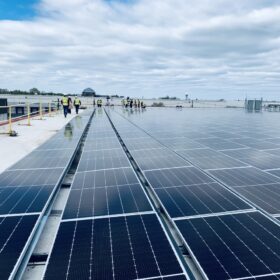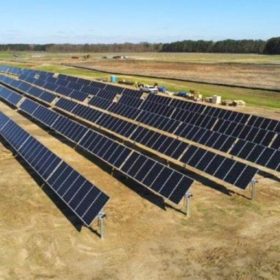It’s not uncommon to travel through a neighborhood and see multiple homes with solar panels on the roof or pull into your grocery store parking lot and see electric cars plugged into charging stations. The move to an electric economy is accelerating, and demand for clean energy to power consumer-side energy systems (generally solar and storage) and electric vehicles (EVs) is growing.
In parallel, as the economy electrifies, consumer-based clean energy generation is also growing towards an inflection point. The International Energy Agency forecasts that the market’s renewable capacity will increase by 50 percent between 2019 and 2024.
Strikingly, this capacity will be outpaced by electrification of transportation, which is accelerating at all points of transport from last-mile scooters and bikes, private vehicles to buses, rail, shipping, and even air. In fact, recent sales reports show that global EV volumes for the first half of 2019 indicate a 46 percent increase over the first half of 2018.
In the face of these changes in consumer demand and production, the current grid operates on the same model it has for the past 100 years: its primary goal is to produce all components of energy, real and reactive power, and to deliver them in the waveform demanded by consumers. To do this, the electricity transmission and distribution system, “the grid,” continues to rely on the generation of real and reactive power by spinning generators.
From spinning generators located at far distances from consumers, electrons are transmitted through the grid at a high voltage, which is stepped down until real and reactive power is delivered, at low voltage, to consumers. This model is ripe for new advances — in particular, advances in how reactive power is produced and used and how to effectively integrate renewable energy to meet demand
There is a reason for reactive power
Alternating current systems use or produce two types of power to operate: real power measured in watts; and reactive power measured in volt-ampere-reactive or VARs (the combination of real and reactive power is apparent power). Real power does work (running motors, illuminating lamps) — while reactive power supports the voltage necessary to turn on an AC- motor or -system and keep the real power balanced and allow a motor or system to operate efficiently.
For an AC circuit to operate, the amount of apparent power must be enough to meet the current and voltage requirements of the circuit. When there is insufficient reactive power voltage drops, and a circuit can fail – this means that insufficient reactive power can cause a motor to seize and stop or parts of the grid to suffer a brown or blackout.
The grid produces reactive power to transmit energy and deliver it to customers to operate AC equipment. But reactive power is difficult to transmit over long distances and at high voltage due to inefficiencies related to line losses and, thus, is correspondingly expensive. Delivering reactive power locally substantially improves distribution grid congestion, which improves efficiency and also reduces the cost of the combined real and reactive power delivered to customers.
Distributed energy resources and the reactive power problem
The increase of distributed energy resources (DERs), commonly solar and storage, creates unique challenges for the grid. Traditional solar and storage systems don’t produce reactive power dynamically or even statically without losing real power capacity. So, even though you have solar panels generating energy on your roof, you’re still drawing (and paying for) reactive power from the grid because your panels are only producing one form of power needed to operate AC equipment. And, for the grid, this means that it must generate and deliver reactive power to supply an increasing need for variable energy.
Despite these difficulties, the concept of using consumer-generating DERs is gaining support as a means of meeting variable consumer demand and providing the grid with voltage support. The very location of DERs, at consumer sites where the energy is used, makes them ideal for producing reactive power to support consumer demand and, as markets mature, grid support. The difficulty in using DERs to support local reactive power production lies in the ability of today’s power electronics to dynamically produce reactive power and respond in sub-seconds to control that component of energy as needed.
With advanced technology solutions, clean energy produced by consumers — at residences, commercial buildings, EV charging locations, and transportation hubs — can be digitally managed to dynamically produce both real and reactive power to meet consumers’ needs and to support the grid.
Benefits of producing reactive power dynamically and locally in sub-seconds
So how does dynamic reactive power generated locally benefit you? All consumers are charged for reactive power – either as an embedded transmission cost or as a direct, reactive power charge. For some customers, this charge can be significant, and being able to produce reactive power dynamically in sub-seconds can yield meaningful savings.
An example is the traditional grid-tied solar home. Since solar energy only generates real power, reactive power can’t be supplied locally. Instead, it must be provided by the grid and distributed along transmission lines. Consumers then receive additional charges (KVAR) on their bill for a level of reactive production that occurs off-site. By employing technologies that generate real and reactive power onsite, solar energy production can be optimized for increased usable energy for consumers. The more solar energy that is generated onsite, and the better quality it is, the more valuable that energy is for consumers and more beneficial for the grid.
The advanced technology to update how energy is produced and used exists today. One example is a small solar system (without storage) that Apparent installed at a downtown Honolulu condominium complex. The complex had high reactive loads due to constant use of elevators, HVAC, and lighting. Hawaiian Electric (HECO), the local utility, charged the building for its reactive load at an average cost of $50,000/month.
After installation of the solar system, the condominium complex reduced the reactive power it demanded from HECO by over 50 percent, resulting in significant cost savings averaging over $100,000/year even though the complex increased energy use and HECO increased rates. These significant cost savings were accomplished from the dynamic production of reactive power, meeting the complex’s demand in sub-seconds. If the system hadn’t been able to produce the complex’s reactive power demand locally and as needed, it would have relied on HECO to meet those needs.
While it’s clear that locally producing all components of energy can benefit consumers, producing reactive power locally provides grid benefits as well. Local production of reactive power allows utilities to manage grid capacity more effectively, reduce oversupply, and better anticipate energy needs. In the example above, after the Honolulu system had operated for over a year, the utility increased the condominium complex’s interconnection size because of the benefits to the local grid. The reduction in consumer demand for reactive power has cascading benefits in reduction of costs ultimately paid for by utility ratepayers including, infrastructure maintenance, as well as cost-savings and air pollution reductions derived from the reduction in over-generation from spinning generators.
The acceleration of electric appliances, adoption of solar and storage systems, electric vehicles, and more broadly, a rapidly electrifying economy does not, as many complain, require a costly overhaul of grid infrastructure. When advanced technology produces the exact combination of real and reactive power where and when it is needed, consumers, and the grid benefit — and such advanced technologies exist today. As consumers and grid operators adopt these technologies, they’ll generate cleaner energy at lower costs and realize cost-efficiencies related to improved management of the electrical grid.
***
Jacqueline DeSouza is president of Apparent. Previously she worked at a private legal and consulting firm she founded to work with start-ups and emerging companies. She received a Bachelor of Science in International Economics and Mathematics from George Mason University and a Juris Doctorate from the University of California Hastings’ College of the Law.
The views and opinions expressed in this article are the author’s own, and do not necessarily reflect those held by pv magazine.
This content is protected by copyright and may not be reused. If you want to cooperate with us and would like to reuse some of our content, please contact: editors@pv-magazine.com.








“Despite these difficulties, the concept of using consumer-generating DERs is gaining support as a means of meeting variable consumer demand and providing the grid with voltage support. The very location of DERs, at consumer sites where the energy is used, makes them ideal for producing reactive power to support consumer demand and, as markets mature, grid support. The difficulty in using DERs to support local reactive power production lies in the ability of today’s power electronics to dynamically produce reactive power and respond in sub-seconds to control that component of energy as needed.”
I would submit, the technology needed as in the recently described SMA medium voltage micro-grid. Part of the VAR solution is the technology already used in VFDs that are designed to control the speed of electric motors. In large plant situations like water reclamation plants, VFDs are widely distributed and can create harmonics that have an effect on the surrounding grid. VFDs over the years have developed from the old six pulse switching design to twelve pulse designs and even eighteen pulse designs. This topology can actually smooth the grid and cancel out harmonics which effectively change the current/voltage relationship creating these sags and surges along the grid. The so called “big battery” energy storage system installed across the Neoen wind farm in Australia has proven itself and has reacted to demands on the grid in milliseconds to seconds, time and again. Basically, energy storage is also grid startup “surge” remediation. Even most solar PV inverters today have the ability to surge almost twice their rated output for 15 to 30 seconds. One just needs the balance of energy storage and inverter output to be paired for a balanced system.
I noyice no cost was provided for the update to the apartment complex and only a savings was noted. What was the cost of the required update to produce vars onsite?
*Since solar energy only generates real power, reactive power can’t be supplied locally.*
This is very outdated. Almost all modern PV systems installed generate reactive power.